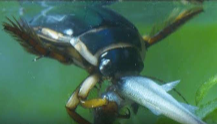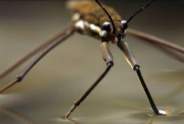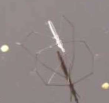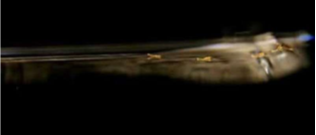Aquatic Entomology Lecture 4 - Locomotion
1/21
There's no tags or description
Looks like no tags are added yet.
Name | Mastery | Learn | Test | Matching | Spaced |
|---|
No study sessions yet.
22 Terms
muscles in the leg attach to the thorax
extrinsic muscles
entirely in leg
intrinsic muscles
(joint) one point of articulation: can rotate
monocondylic
(joint) two points of articulation: only move in one plane
dicondylic
monocondylic joints (1)
tibia-tarsus
dycondylic joints (4)
Thorax-coxa
Coxa-trochanter
Trochanter-femur
Femur-tibia

How do insects walk
legs are FLEXXED which lifts the tip OFF the ground. The leg can also be EXTENDED which pushes the leg outward which creates thrust
each side is counterbalance by the otherside to insects always have 3 points on the ground
How insects move in water (4)
Swimming with jointed appendages
Body

Swimming with jointed appendages
Assumption: High Re
Legs row and act as paddles —> result in motion in the opposite way
1.) Perfect transverse phase synchrony
2.) Alternative-leg swimming
Swimming leg modification: Oar like (Modifications, Mechanisms (2))
Modification: Flattened segments and addition of swimming hairs
Mechanism:
1.) Power stroke: Creates thrust, maximizing surface area, /\
2.) Recovery: Decreases surface area, V
Swimming with legs at surface (Challenge, ORGANISM)
Challenges: Can create waves that lower efficiency)
Organism: Whirling Beetle
Swimming via undulation (mechanism)
Move body (up and down or side to side)
Insects with and without legs can use this method
Jet Propulsion (Method, ORGANISM (2))
Organism: Larval dragonflies and some damselfies
usually walks
uses jet propulsion for emergencies
water drawn into hindgut and ejected forcefully

Vertical movement using buoyancy (Organism)
Moving up and down the water colum using stored air
Organism: Phantom Midge Larvae: Chaoboridae
Types of movement on the water surface (9)
Surface walking, rowing, running, jumping
Skimming, sailing skating
Meniscus climbing
Marangoni propulsion

Rowing and jumping (Organism)
Gerrids

Walking (organism)
Hydrometridae (Water measurers)
Insects stay in contact with water while flying to help with support
Skimming
Insects use wings as sails
Sailing

Use gills to hang down from water surface. The gills act as a foot along surface
Skating

Curve the surface film and create forces to drive them up to meniscus (organism)
Maniscus climbing
organism: thirps
Exude surfactant which reduces the surface tension. This results in a force that propels them forwards. (organism)
Marangoni propulsion